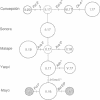Abstract
Genetic diversity in mtDNA was assessed within the unisexual (all female) hybridogenetic fish Poeciliopsis monacha-occidentalis and the two sexual species from which it arose. Results confirm that P. monacha was the maternal ancestor and that paternal leakage of P. occidentalis mtDNA has not occurred. Of particular interest is the high level of de novo mutational divergence within one hybridogenetic lineage that on the basis of independent zoogeographic considerations, protein electrophoretic data, and tissue grafting analysis is of monophyletic (single hybridization) origin. Using a conventional mtDNA clock calibration, we estimate that this unisexual clade might be >100,000 generations old. Contrary to conventional belief, this result shows that some unisexual vertebrate lineages can achieve a substantial evolutionary age.
Full text
PDF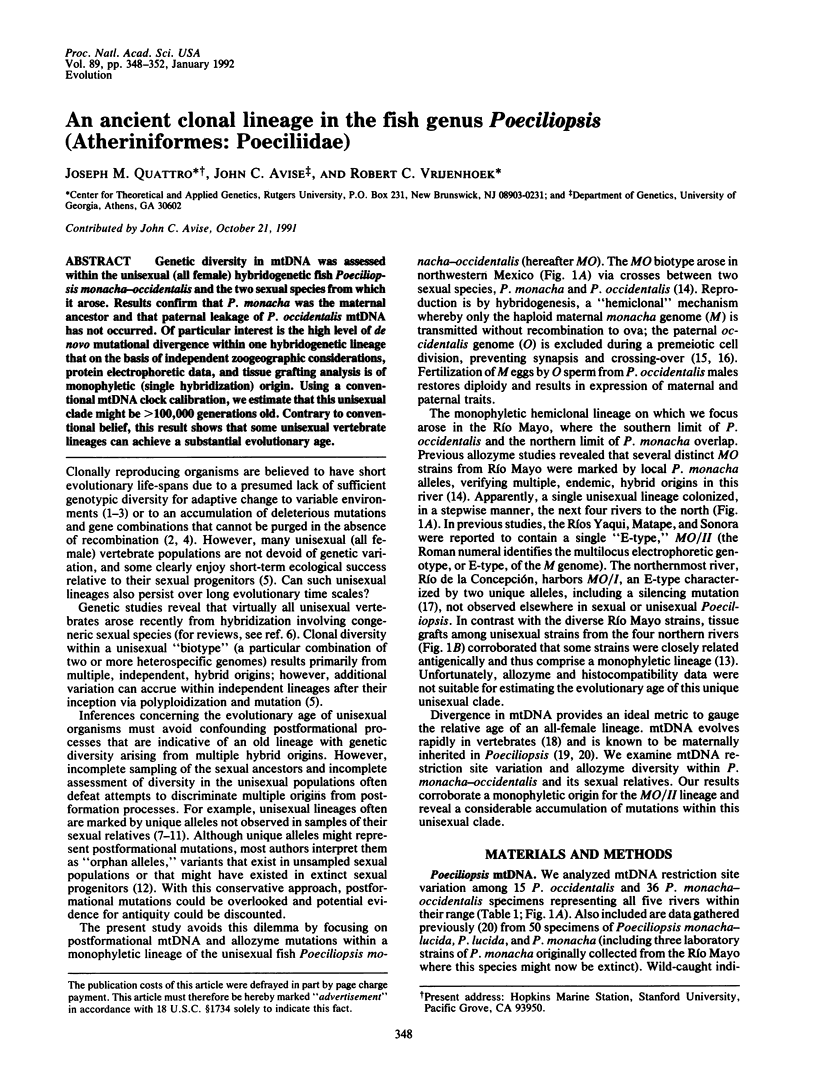
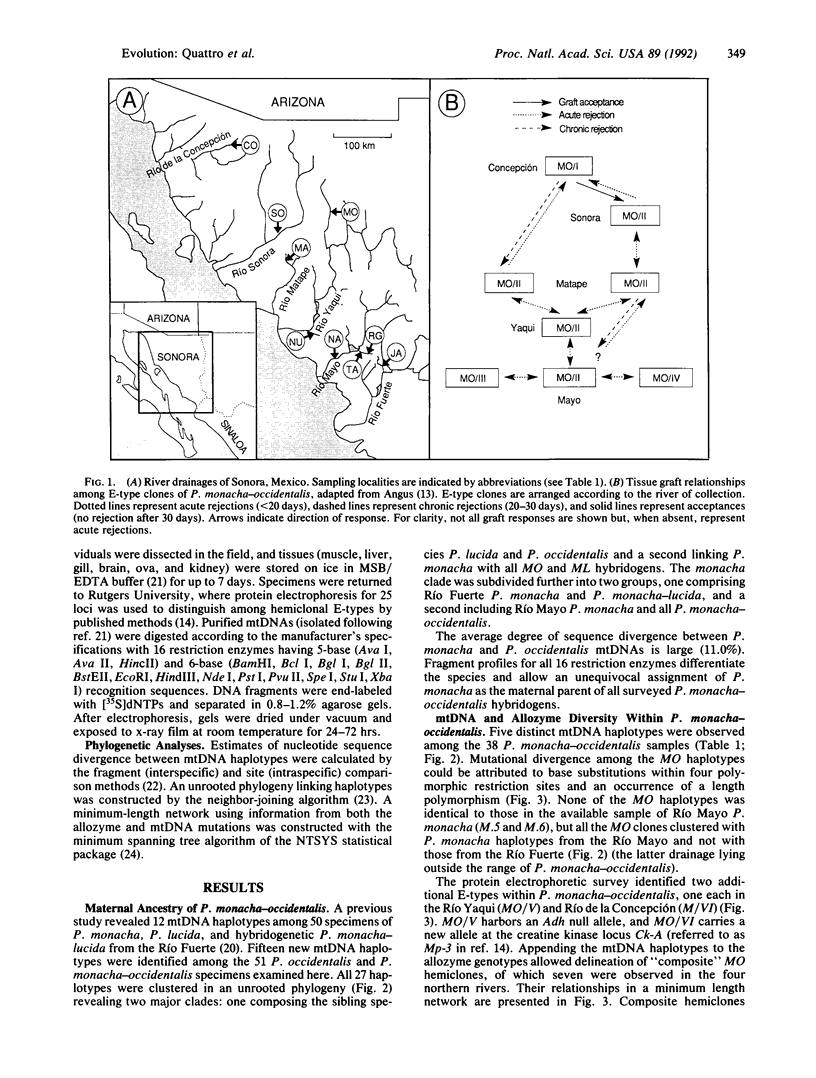
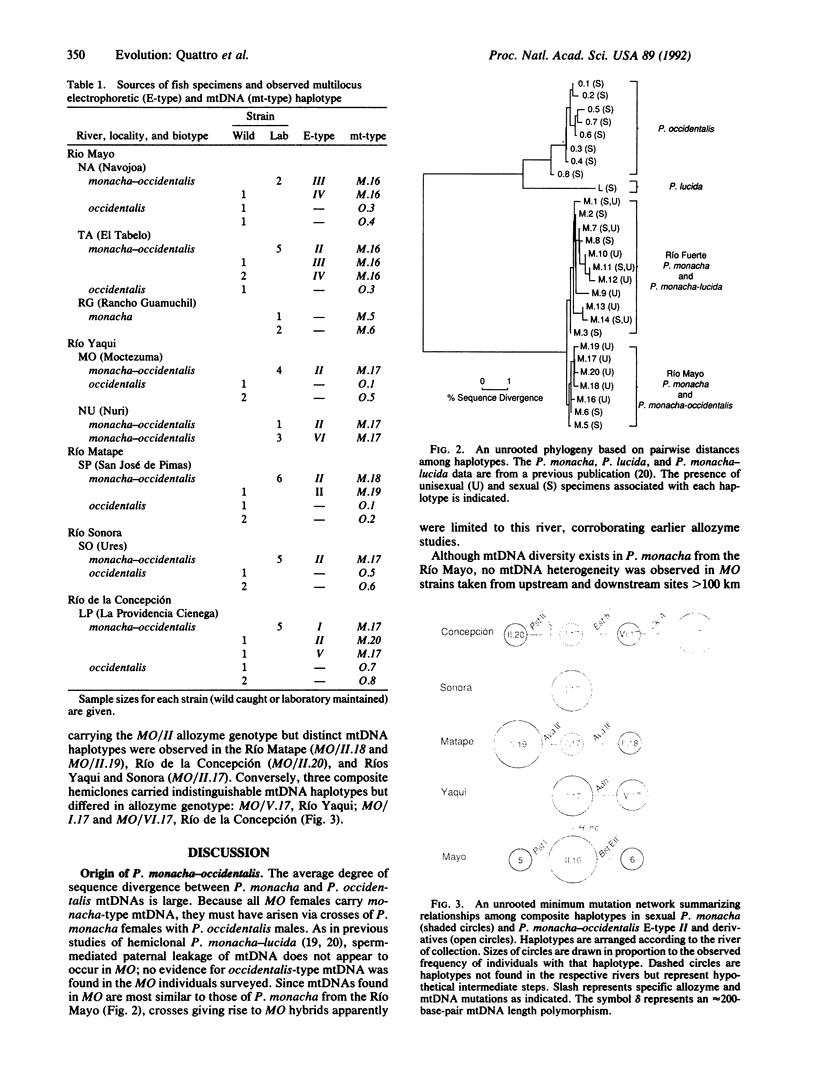
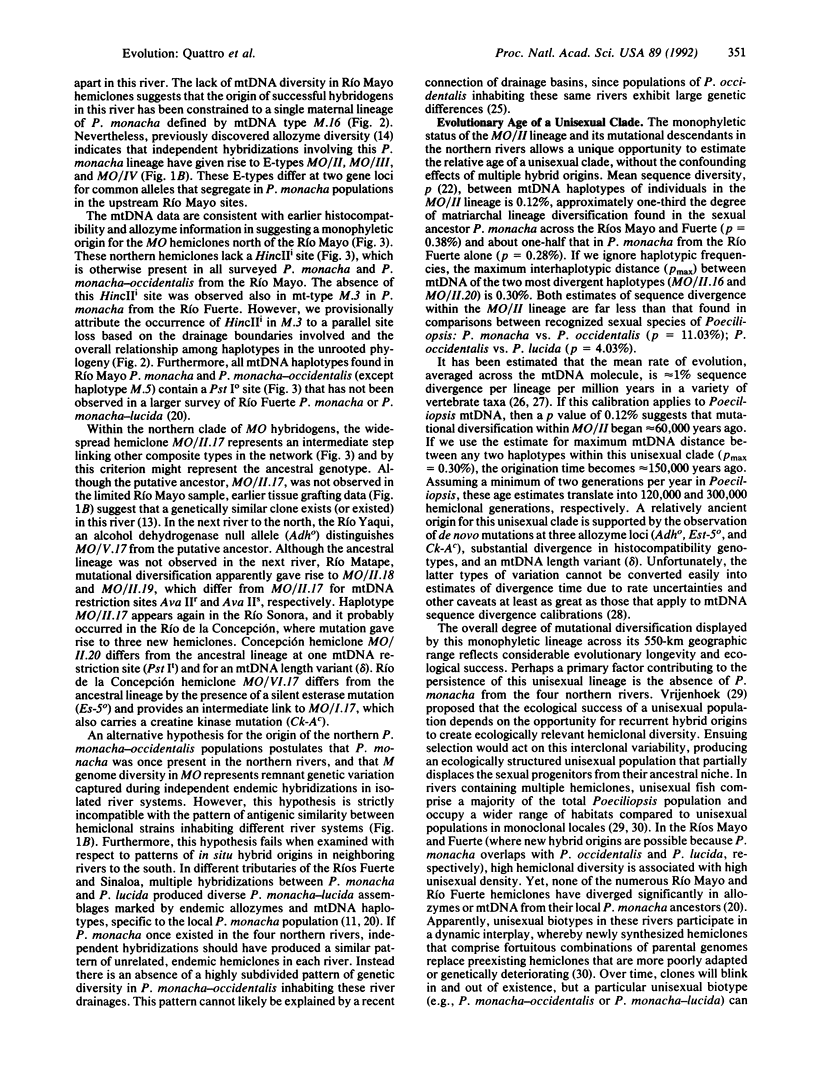
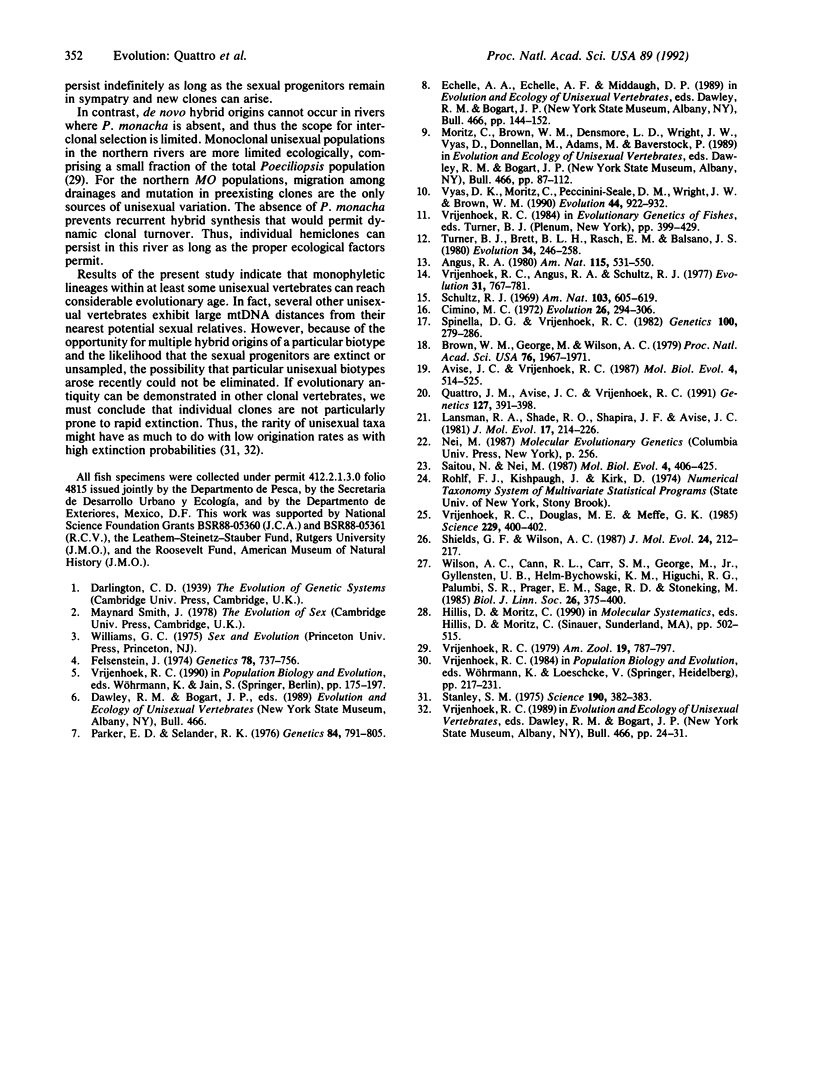
Images in this article
Selected References
These references are in PubMed. This may not be the complete list of references from this article.
- Brown W. M., George M., Jr, Wilson A. C. Rapid evolution of animal mitochondrial DNA. Proc Natl Acad Sci U S A. 1979 Apr;76(4):1967–1971. doi: 10.1073/pnas.76.4.1967. [DOI] [PMC free article] [PubMed] [Google Scholar]
- Felsenstein J. The evolutionary advantage of recombination. Genetics. 1974 Oct;78(2):737–756. doi: 10.1093/genetics/78.2.737. [DOI] [PMC free article] [PubMed] [Google Scholar]
- Lansman R. A., Shade R. O., Shapira J. F., Avise J. C. The use of restriction endonucleases to measure mitochondrial DNA sequence relatedness in natural populations. III. Techniques and potential applications. J Mol Evol. 1981;17(4):214–226. doi: 10.1007/BF01732759. [DOI] [PubMed] [Google Scholar]
- Parker E. D., Jr, Selander R. K. The organization of genetic diversity in the parthenogenetic lizard Cnemidophorus tesselatus. Genetics. 1976 Dec;84(4):791–805. doi: 10.1093/genetics/84.4.791. [DOI] [PMC free article] [PubMed] [Google Scholar]
- Quattro J. M., Avise J. C., Vrijenhoek R. C. Molecular evidence for multiple origins of hybridogenetic fish clones (Poeciliidae:Poeciliopsis). Genetics. 1991 Feb;127(2):391–398. doi: 10.1093/genetics/127.2.391. [DOI] [PMC free article] [PubMed] [Google Scholar]
- Saitou N., Nei M. The neighbor-joining method: a new method for reconstructing phylogenetic trees. Mol Biol Evol. 1987 Jul;4(4):406–425. doi: 10.1093/oxfordjournals.molbev.a040454. [DOI] [PubMed] [Google Scholar]
- Shields G. F., Wilson A. C. Calibration of mitochondrial DNA evolution in geese. J Mol Evol. 1987;24(3):212–217. doi: 10.1007/BF02111234. [DOI] [PubMed] [Google Scholar]
- Spinella D. G., Vrijenhoek R. C. Genetic dissection of clonally inherited genomes of Poeciliopsis: II. Investigation of a silent carboxylesterase allele. Genetics. 1982 Feb;100(2):279–286. doi: 10.1093/genetics/100.2.279. [DOI] [PMC free article] [PubMed] [Google Scholar]
- Stanley S. M. Clades versus clones in evolution: why we have sex. Science. 1975 Oct 24;190(4212):382–383. doi: 10.1126/science.1179215. [DOI] [PubMed] [Google Scholar]
- Vrijenhoek R. C., Douglas M. E., Meffe G. K. Conservation genetics of endangered fish populations in Arizona. Science. 1985 Jul 26;229(4711):400–402. doi: 10.1126/science.229.4711.400. [DOI] [PubMed] [Google Scholar]




